The piety of the Jagiellonians is often mentioned as one of the main family traits. We know that Władysław Jagiełło and Queen Sonka devoted a lot of attention to spiritual issues, and they raised their children in the cult of their ancestors - defenders of Christianity. They did it for a reason!
"The religiousness and piety of the ruler at the time when the third generation of the Jagiellonians was formed, was the foundation of every good rule" - we read in an article by Urszula Borkowska in Analecta Cracoviensia . From the same text, we will also learn that Kazimierz IV Jagiellończyk surpassed even his parents in piety, although in his political career he stood in the way of church hierarchs many times. His sons were taught in the spirit of faith - but was it really in the spirit of the Church?
Political champion
The Jagiellonian was certainly an outstanding king. He started his political career at the age of 13, when Prince Zygmunt Kiejstutowicz was murdered in Lithuania. Kazimierz was then proclaimed Grand Duke. He was in power for seven years and was very successful in this field.
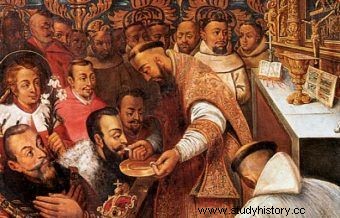
What was the question of the piety of Kazimierz Jagiellończyk really look like?
When he was invited to take the throne of Poland after the death of Władysław Warneńczyk, he deliberately stalled, refusing to agree to the conditions presented. It was only when the dignitaries softened (they really cared about a personal union) that Kazimierz agreed to come to Poland. Moreover, he took the throne with virtually no preconditions, not even approving the privileges of the nobility!
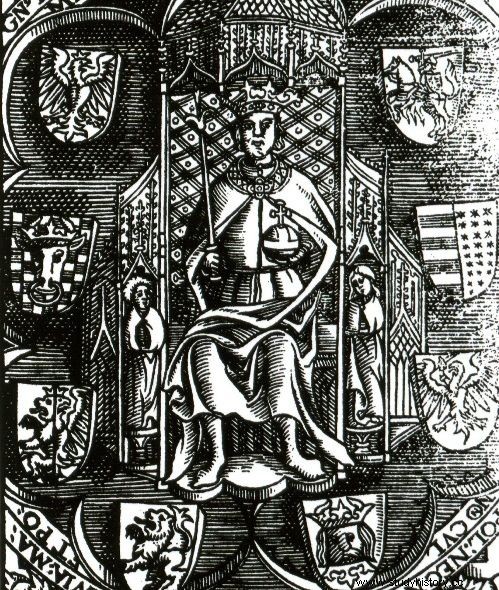
King Casimir IV (15th century)
Immediately after the coronation, Jagiellonian came into conflict with the bishop of Oleśnica. It was only 6 years later that he agreed to confirm the privileges of the nobility when he made sure that Lithuania would maintain its integrity. At the same time, he weakened the bishop's political position, breaking up his party. Not only that, as we learn from the account of Jan Długosz, during the Diet in Piotrków in 1449, the king asked from the deliberations, arguing about the title of the most important dignitary, Archbishop Władysław Oporowski and Bishop Oleśnicki. After this event, the Jagiellonian established the rule that no one could apply for a cardinal's hat without his consent. In this way, he subjugated the most important figures of the church, finally strengthened his position as monarch, and ... fell into disrespect to the pope!
And yet, despite such high self-confidence and political skill, the king did not consider himself the most important person in the state. After all, he was accountable to god, which he demonstrated at every step…
Jagiellons countless
Elżbieta Rakuszanka became the queen alongside Kazimierz. Legend has it that the king was scared of her beauty at the first meeting and fled to his chambers. However, this would be contradicted by the fact that the couple in power had as many as thirteen children. As we read in the article by Janusz Kubicki:
Historians believe that all the ruling European royal families today descend on the distaff side of Kazimierz Jagiellończyk, who married his daughters, incl. for the Duke of Szczecin (Bogusław X), Legnica and German dukes. His eldest daughter, Jadwiga, was married to the Bavarian prince of Landshut in 1475.
This might seem like another political maneuver, and quite an effective method of consolidating the strength of the family. But the king surely also took care to educate his offspring well. Good - that is, in the spirit of the Christian faith, in which the well-read and worldly Elizabeth helped a lot.
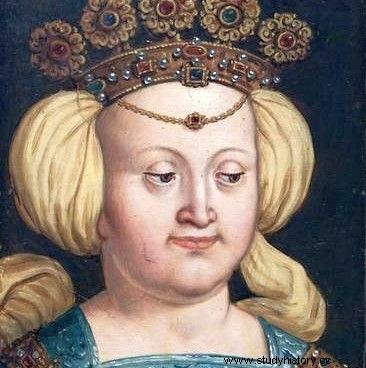
Elżbieta Rakuszanka is also called the mother of kings
Kazimierz, according to Queen Elizabeth's opinion, expressed a few years after her husband's death, was "the most pious monarch of his time." As it is confirmed by numerous sources, she had a great influence on the religious education of children who "drew from the holy mother the fear of God, religion, mercy and humanity with food
- we read in the text by Urszula Borkowska. Such upbringing brought the desired results. Virtually all descriptions of the Jagiellonian's offspring preserved in the chronicles prove that his daughters and sons consistently followed their parents' vision.
You can't move without the altar
We can learn a lot about the everyday life of the royal family from the preserved court accounts from 1471-1472 and 1476-1478. It is known, for example, that despite the wandering lifestyle (rex ambulance), Kazimierz, Elżbieta and all their offspring participated in Holy Masses every day . This means that the royal entourage always had a portable altar with them with all the necessary equipment:boxes with missals, robes and utensils.
Following the example of Władysław Jagiełło, Kazimierz made frequent pilgrimages. He was particularly fond of the Holy Trinity Monastery on Łysa Góra, where he made a pilgrimage with his sons when they reached the appropriate age. Kazimierz had the church on Łysa Góra renovated after the fire and granted it privileges.
The cult of the Mother of God was very important for the Jagiellonians. They celebrated the related holidays with particular veneration. Kazimierz's son and later Polish king, Sigismund I, funded the construction of one of the jewels of Renaissance architecture, the royal chapel dedicated to Mary with a silver altar and a number of works of sacred art:bell, coronation cope, monstrance, sword, casket ...
A question of education
Kazimierz was brought up and educated thanks to the efforts of Władysław Jagiełło. It was the father of Jagiellończyk who insisted on proper education of his sons, despite the fact that some of the participants of the convention in Warta had questioned the legitimacy of this decision.
Kazimierz approached the education of his children in a similar way, appointing Jan Długosz as a teacher. The level represented by Elżbieta Habsburg, the pupil of Helena Kottaner and the master Hinterbach, who liked the Order of Saint Francis with great liking, was also not without significance ... Although in the end, the greatest emphasis was placed on educating the male grandsons of Władysław Jagiełło.
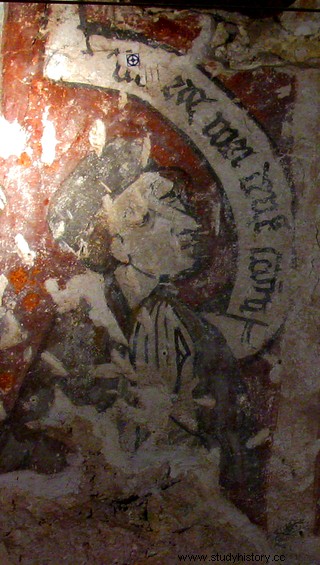
Jan Długosz became the teacher of Kazimierz Jagiellończyk's children. In the photograph, the alleged image of Jan Długosz on a fresco from the end of the 15th century in the Długosz House in Wiślica
Kazimierz [...] wanted them to become heirs to the thrones, ensuring their inheritance and, at the same time, a beneficial influence for the dynasty on the balance of power in Central Europe. The more so because the sons came, thanks to the pedigree of their mother Elizabeth, from Albrecht, the king of Rome, Bohemia and Hungary
- we read in Marek Makowski's article in the Polish-Ukrainian Yearbook.
Appreciating the merits, life experience and exceptional character of Jan Długosz, he was elected a teacher and steward (forgetting any obstacles, true or not, that Długosz could have, being a supporter of the bishop of Kraków Zbigniew Oleśnicki against the monarch, allowed or to be accused of them).
Diverse book collection
The reason for this choice of the Jagiellonian was, apart from honesty, common sense, strength of character or practical sense, the religiosity of Jan Długosz. According to historians, the teacher assumed his important role with full awareness, and among the highest virtues of future monarchs he exchanged deep faith in God.
Długosz's pupils had the opportunity to learn in interesting times, when the medieval approach began to intertwine with humanism, which was gaining popularity. Therefore, among the works from which they drew their knowledge was, among others, "De ingenuis moribus et liberalibus studiis adolescentiae" by an Italian author, who advocated a departure from preparing students for the afterlife, instead proposing to learn to hold civil and military offices.
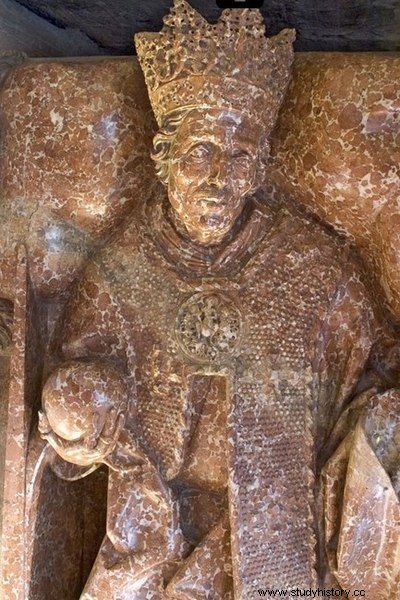
Fragment of Kazimierz IV's tombstone sculpted by Wit Stoss in the Wawel Cathedral
Among the not necessarily "mainstream" books there was also "De miseria conditionis humane" by Poggio Gian Francesco Bracciolini, who criticized the high church hierarchy, including the papacy. They also learned the art of oratory from Długosz, speaking both Latin and Polish, and many of the king's sons' fiery speeches have survived to this day.
Such an open world reading did not prevent Kazimierz's son, Zygmunt, from gathering a large collection of prayer books of unique value. For one of the copies, as we learn again from the surviving bills, he paid a total of 17 florins. In total, his collection contained several different prayer books and "hours", and the future king was to use them ... a few hours a day!
An intriguing picture of the religiosity of the Jagiellonians is drawn, giving the impression of two-fold - on the one hand they certainly devoted a large part of their lives to matters of the spirit, giving even demonstrative evidence of devotion to God, and on the other - they pursued a tough policy with the church and were not afraid of a new thought.
Bibliography:
- Borkowska, U., The piety of the family of Kazimierz Jagiellończyk. Analecta Cracoviensia XVI, 1984.
- Kubicki, J., The marital life of Kazimierz Jagiellończyk (1427 - 1492). Practical Gynecology, 2/2006, vol. 14.
- Maciorowski, M., Maciejewska, B., Rulers of Poland. History re-told. Book Publishing House Agora, Warsaw, 2018.
- Makowski, M., Jan Długosz as the tutor of the royal sons at the court of Kazimierz Jagiellończyk. Polish-Ukrainian Yearbook, Volume XX, University of Humanities and Sciences Jan Długosz in Częstochowa, 2018.
